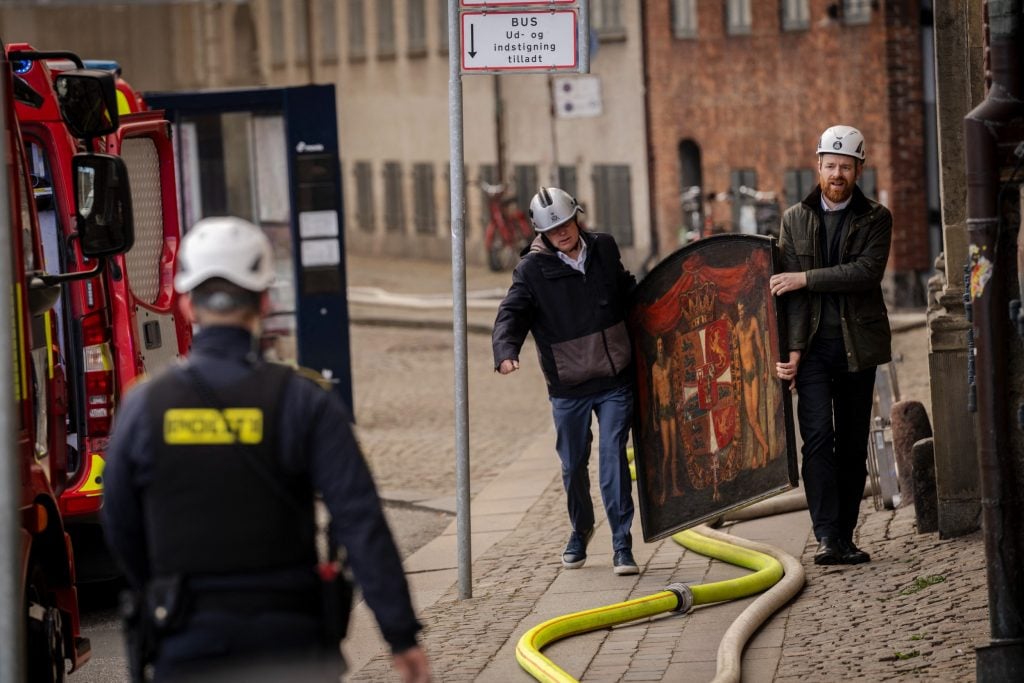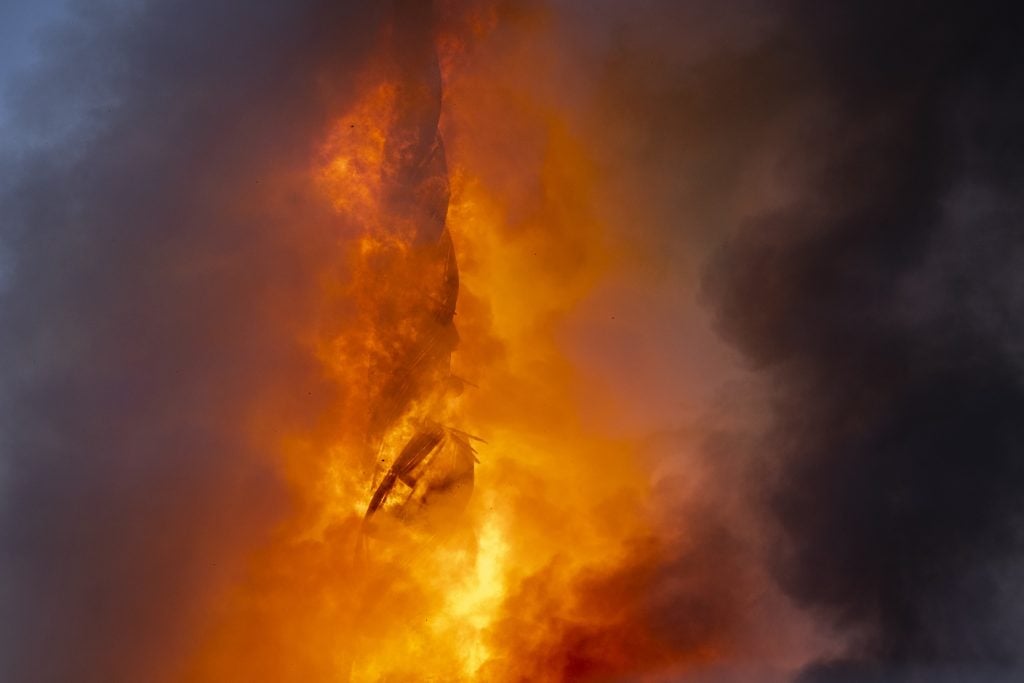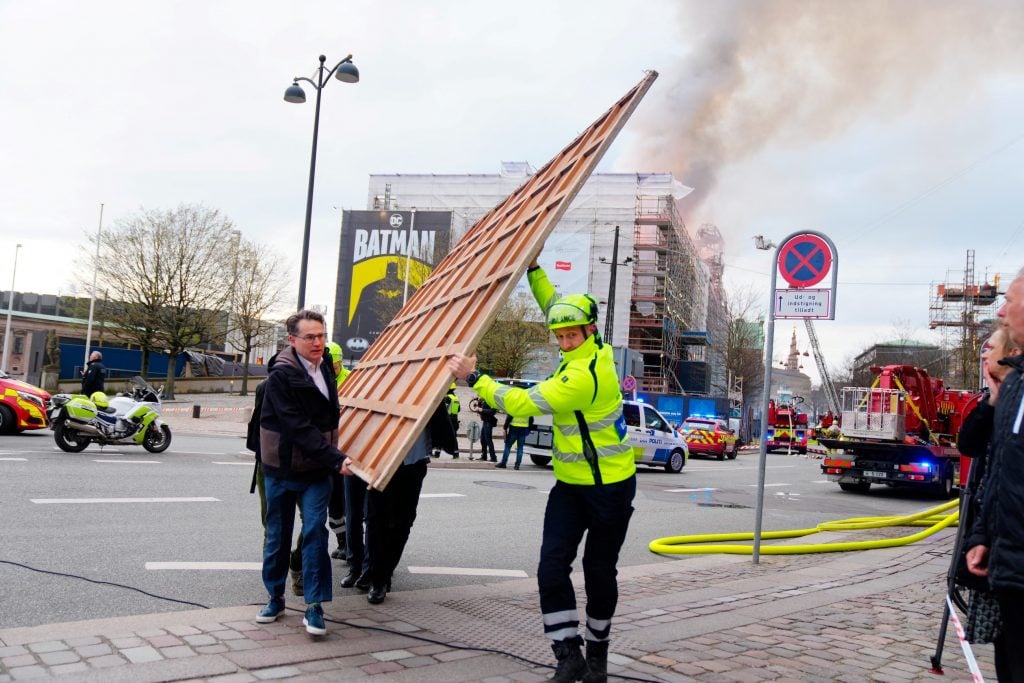Art World
Artworks Rescued as Fire Rips Through Copenhagen’s 17th-Century Stock Exchange Building
No injuries were reported as historic paintings and other artifacts were rescued from the flames.

No injuries were reported as historic paintings and other artifacts were rescued from the flames.

Brian Boucher

The 17th-century building that used to house Denmark’s national stock exchange has been decimated in a fire on the morning of April 16. The building’s iconic 180-foot-tall spire collapsed in flames as onlookers watched in horror. The cause of the fire, which broke out at about 8:30 a.m. local time, is not yet known.
The cultural heritage housed in the building, one of Copenhagen’s oldest and a major tourist attraction, was top of mind even for fire officials.
“We have tried to rescue a lot of historic paintings that were inside the building and the historic furniture,” Jakob Vedsted Andersen, an executive director at the Greater Copenhagen fire and rescue service, told CNN.
“How touching it is to see how the employees at Børsen, good people from the emergency services and passers-by work together to rescue art treasures and iconic images from the burning building,” said Denmark’s culture minister Jakob Engel-Schmidt in a post on X.

The tower of the historic Boersen stock exchange stands in flames as the building is on fire in central Copenhagen, Denmark on April 16, 2024.. Photo: Ida Marie Odgaard/Ritzau Scanpix/AFP/Denmark OUT.
Everyone in the building reportedly escaped the flames without injury. Local museum inspector Benjamin Asmussen told Denmark’s TV2 that the building was full of historically significant Danish works dating as far back as the 17th century, the BBC reported. Among the rescued canvases was one by Peder Severin Krøyer, also known as P. S. Krøyer, showing 50 important Danish businessmen inside the building itself. Works have been moved to the parliament building as well as the Danish National Archives nearby, according to the AP.
The stock exchange left the building in 1974, and the Danish Chamber of Commerce currently owns it and has its offices there. “We have been able to rescue a lot,” Brian Mikkelsen, chief of the Chamber of Commerce, told the AP. “It is a national disaster.”
Culture minister Jakob Engel-Schmidt told the BBC that four centuries of Danish cultural heritage had been destroyed. Nearly half the building was destroyed by 11 a.m., a fire department official told CNN.

Former Danish Minister of Culture and current CEO of Danish Business, Brian Mikkelsen (at left) assists with the evacuation of paintings and other objects from the historic Boersen building. Photo by Ida Marie Odgaard/Ritzau Scanpix/AFP/Denmark OUT.
Denmark’s Deputy Prime Minister, Troels Lund Poulsen, called the fire “our own Notre-Dame moment,” as reported by CNN, putting it alongside the conflagration that partly destroyed that historic cathedral in the French capital five years ago, almost to the day.
The building, in a Dutch Renaissance style, dates to 1625 and neighbors the parliament building, the Folketing, which is in the royal palace of Christiansborg castle. It was topped by the iconic dragon spire, so called because it featured four dragons whose tails were twisted together, along with three crowns, standing for the country’s close ties with neighboring nations Norway and Sweden.
The building was under renovation and thus surrounded by scaffolding. Emergency services said the scaffolding was making their attempts to fight the fire more difficult, the BBC reported. Frank Trier Mikkelsen, operations manager at the Greater Copenhagen fire department, told Danish TV2 that another factor heightening the difficulty of fighting the fire was the building’s very structure: since its roof is made of copper, water simply runs off of it, so parts of it must be removed for firefighters to spray water in to the interior from above.